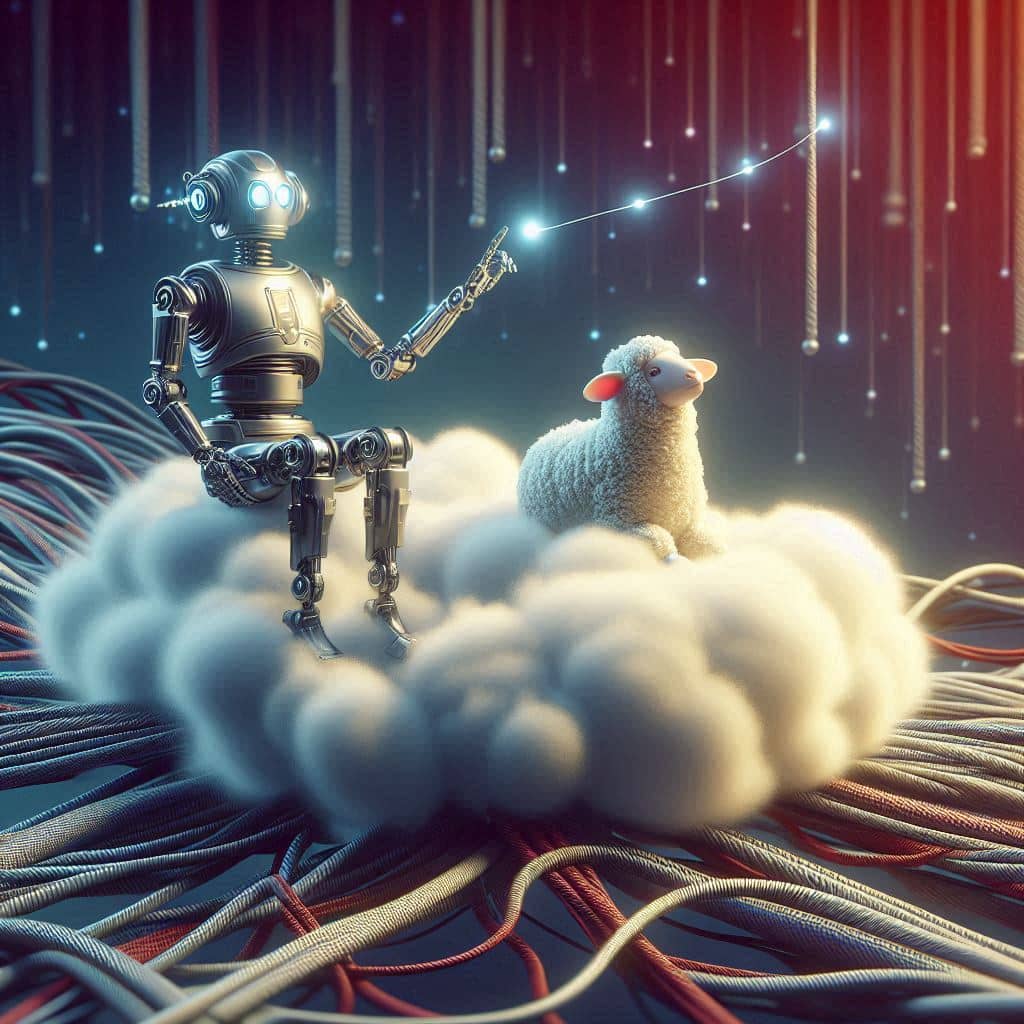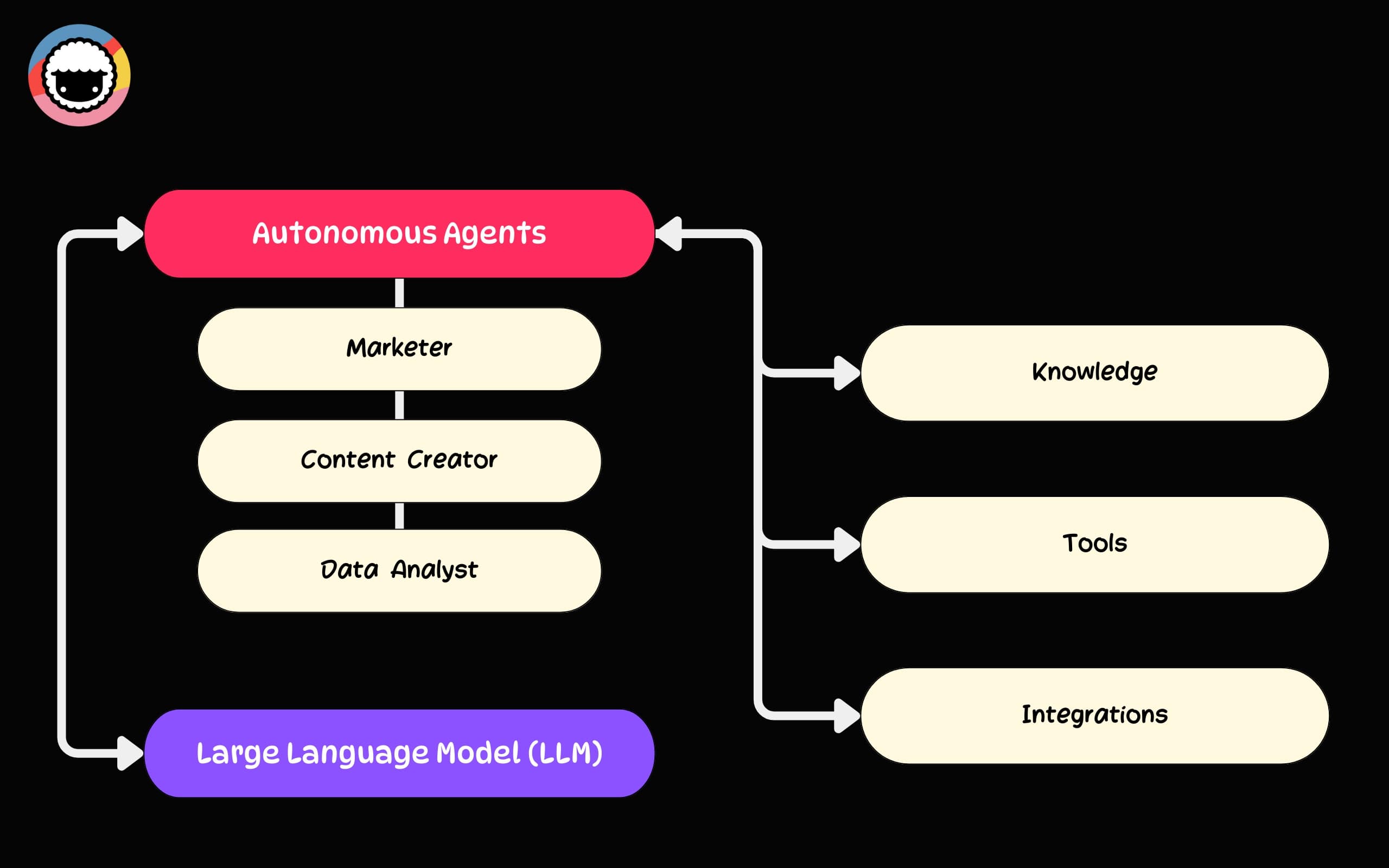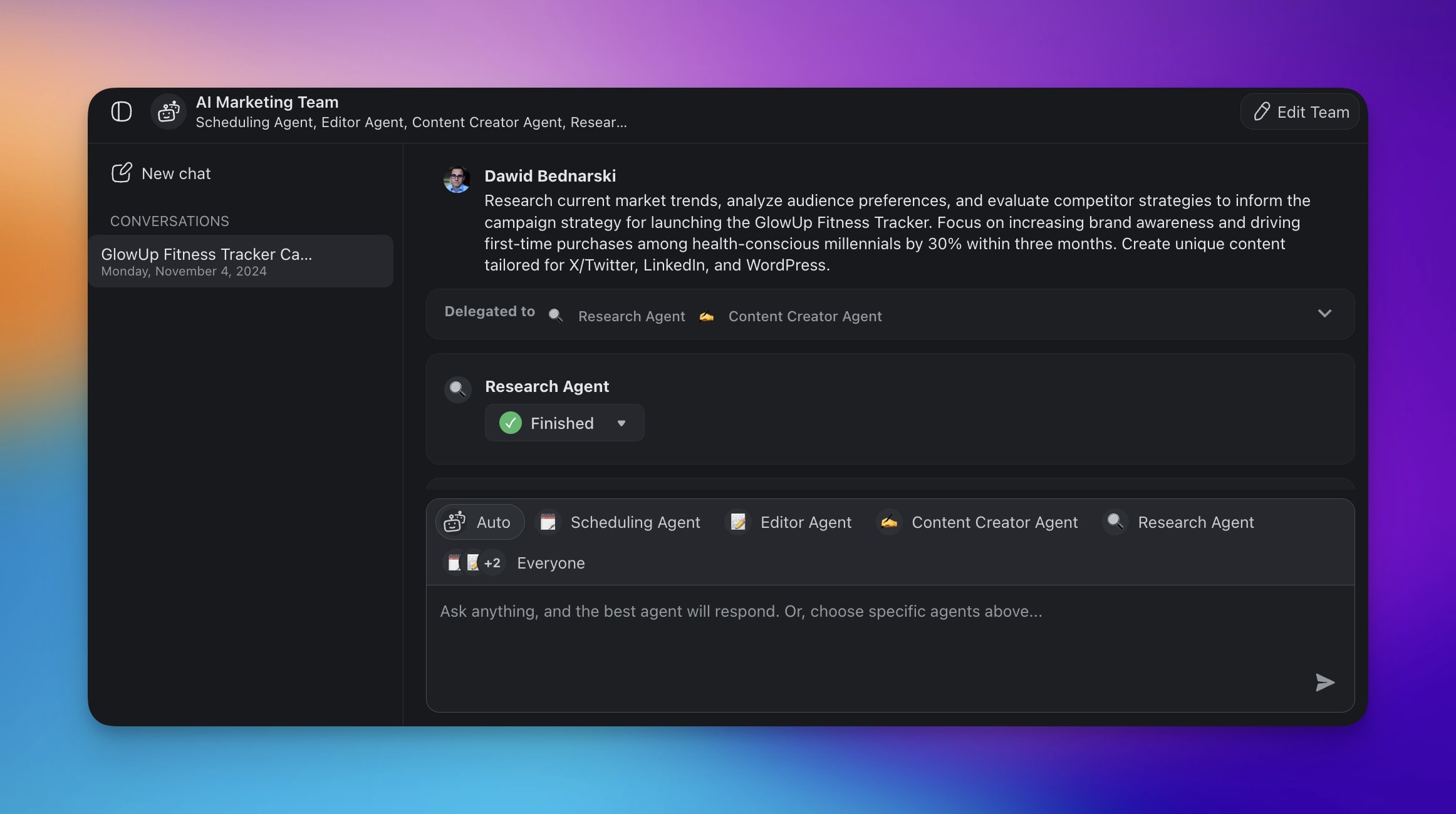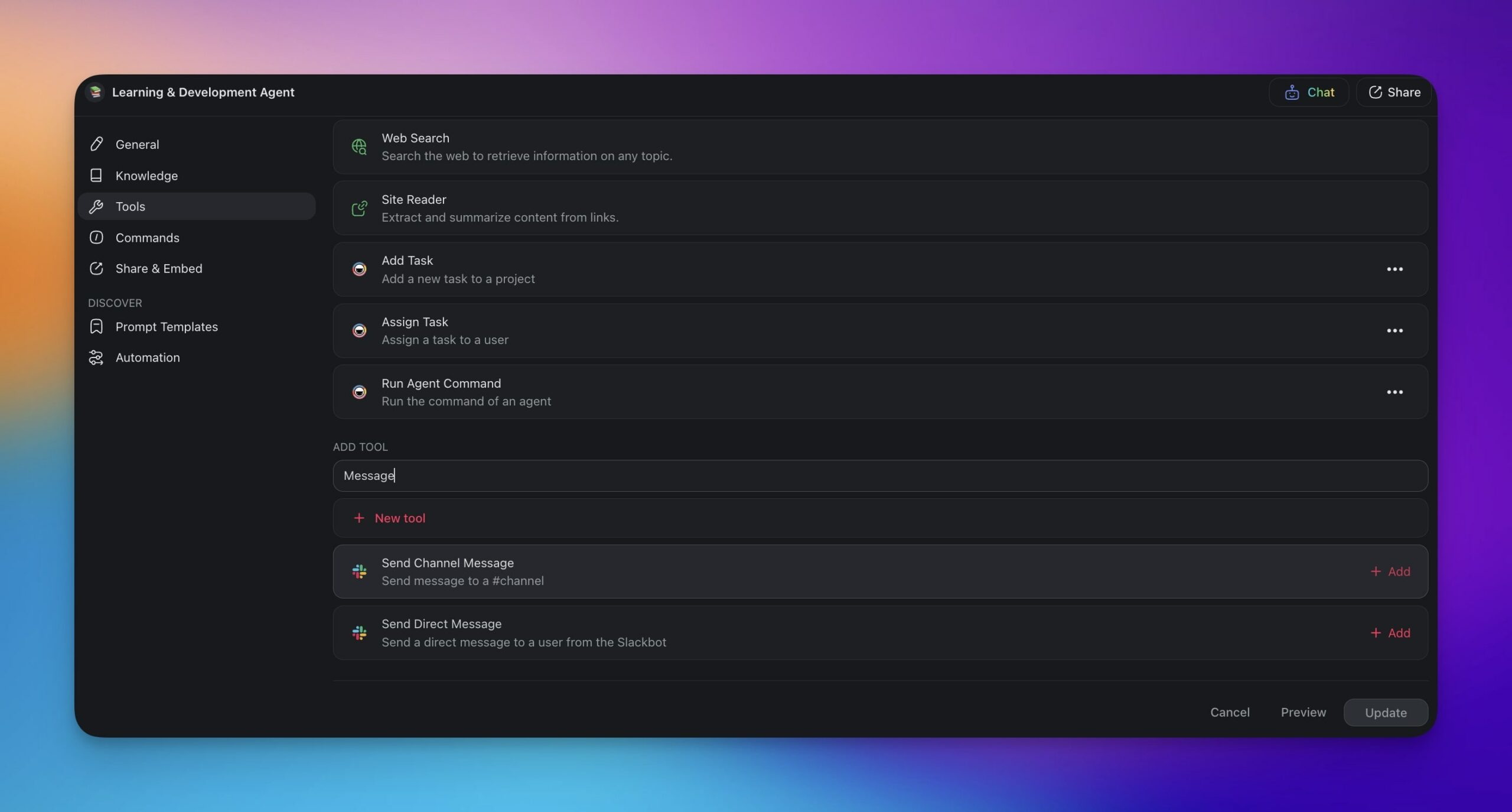Agentic Workflows: Paving the Path Towards AGI
What's AGI (Artificial General Intelligence)? You might think of it as a single AI that surpasses human intelligence, or as a network of AIs working together to...
What's AGI (Artificial General Intelligence)? You might think of it as a single AI that surpasses human intelligence, or as a network of AIs working together to think like us. Either way, reaching AGI is no easy task, but agentic workflows could be the stepping stone we need to get there.
Before ChatGPT's mainstream success, we had gone through a number of pivotal developments — Alan Turing's "intelligent machine" concept , the 1956 Dartmouth Conference that coined the term "artificial intelligence," the rise of deep learning, the emergence of neural networks...
With agentic workflows, AI is stepping into a new era. In this article, we explore how they work, why they can help you work more efficiently, and how they bring us closer to achieving AGI.

🤖🤖 Understanding Agentic Workflows
The term “agentic” is not new. In fact, it wasn’t even first explored by the tech landscape but by Canadian-American psychologist Albert Bandura in the late 1970s. Bandura studied the concept of agency which describes the human ability to exercise control over one's own actions.(1)
AI agentic workflows build on a similar principle. They enable AI systems to execute tasks, make decisions, and interact with their environment with a degree of autonomy.
A typical agentic workflow consists of several key elements.
🧠 A large language model (LLM): Models like GPT-4o or LLaMA 2 are the “brains” of agentic workflows. They process and interpret data.
🤖 AI autonomous agents: Software entities that act as “decision-making engines” for LLMs; they guide AI models using reasoning capabilities.
🧰 Tools & Integrations: AI agent tools allow agentic systems to interact with their environment as well as external platforms.
💡 Data & Knowledge: Agentic workflows combine LLM’s training data and input obtained dynamically in the process called "fine-tuning."

Based on what we know, let’s try to put together more uniform definitions:
Agentic Workflow: The structured processes that enable AI systems to operate fully or semi-autonomously. It defines how tasks are managed, how decisions are made, and how the system adapts to new information and environments.
Agentic System: A comprehensive AI infrastructure encompassing large language models (LLMs), AI autonomous agents, data, as well as tools & integrations necessary for processing information and executing tasks.
Essentially, while agentic workflows handle the "how," agentic systems are the "what" — the complete setup capable of executing agentic workflows without supervision.
So far so good. Let's dig a little deeper.
📐 Design Patterns in Agentic Workflows
The concept of agentic and iterative workflows is still relatively fresh. However, according to AI researcher and Google Brain cofounder Andrew Ng, there are several agentic workflow design patterns that provide a framework for understanding their potential.(2) Let’s break them down. 👇
Reflection
The human brain has a remarkable ability known as metacognition, which is the ability to reflect on and regulate one's own thought processes. It lets you think about your own thinking, cool right?
This ability, defined in the late 1970s by psychologists like John Flavell, plays a crucial role in learning and decision-making. It's also key to understanding how agentic workflows function.(3)
When you type a prompt into ChatGPT, the system doesn’t analyze the output it generates beyond your request. It doesn't question the instructions or their purpose. This is the user's (your) responsibility.
In an agentic workflow, every action is followed by “reflection.” The system continuously assesses its actions, makes informed adjustments, and optimizes its performance as long as it is operational.
Tool Use
A 2023 study found that on average, a typical office worker uses between 4 to 11 different applications, platforms, and tools daily to accomplish various tasks.(4)
That can include email clients, word processors, spreadsheets, project management software, communication platforms, automation tools, and many more.
In a similar way, agents can dynamically identify and call tools necessary for completing set objectives. This expands the system’s functional range and allows it to execute tasks that require capabilities not present in its initial design. That's how it keeps getting better at tackling problems.
Planning
Our ability to make plans is extremely sophisticated. At the heart of it is the prefrontal cortex, the part of the brain responsible for setting goals and controlling impulses.
LLMs don’t plan ahead; they lack the ability to set goals and rely on us for context and direction.
In a typical human-AI interaction, we can simulate limited planning with prompt engineering techniques like multi-shot or chain-of-thought prompting. But it is still the human who pulls the strings.
An agentic system removes the human from the loop, either partially or completely. An agent can independently analyze its overarching objective, break it down into smaller actions, and present the sequence to an LLM in self-directed loops. This lets the agent play its own tune.
Multi-Agent Collaboration
In 1997, a group of university researchers came up with the idea of RoboCup, a robot version of soccer created to advance research in robotics and artificial intelligence.(5)
On a miniature pitch, typically measuring about 9 meters by 6 meters, teams of autonomous robots engage in their own version of dribbling, passing, and taking shots. And it’s as fun as it sounds.
In a way, agentic workflows work in a similar way. They thrive on the collective intelligence and multi-agent collaborations where each agent contributes unique skills, knowledge, and tools.
Simulating human-human collaboration, agents can overcome their limitations and solve complex problems beyond the scope of their programming.
This “distributed intelligence” is particularly useful in scenarios that require diverse skill sets or processing of multiple task dimensions like coding and creative work.
🪄 Practical Applications and Implementations
Tools like ChatGPT hold their own in context-comprehension skills and the ability to connect the dots across various domains. But each interaction still requires an unreasonable amount of grunt work.
Let’s compare how they fare against agentic workflows in a few real-world examples.
Managing a Business or Team
Let’s say you’re a manager in a tech startup.
On a typical day, you probably use chat-based AI tools to draft emails, coordinate schedules, and enter data. While LLMs help, there is a disconnect between each step in the process.
Here's how the process may look:
You start the day by drafting emails to communicate priorities to your team. AI assists you in crafting and personalizing messages.
You move to your calendar application to schedule or adjust meetings. AI suggests optimal times based on team availability.
You pull data from various reports to prepare for a meeting. AI compiles data from various sources and presents it in an easily digestible format.
Each step requires transitioning between tools and platforms. Each step requires you to keep your finger on the pulse and provide context for subsequent actions.
An agentic workflow offers a more integrated experience:
| ⏩ Step | 👤 Agent | ⚙️ Action |
|---|---|---|
| ✉️ Step 1 | 👤 (User) | Jots down quick notes or ideas. |
| 🤖 (Note Manager Agent) | Reviews and organizes your notes. | |
| 🤖 (Email Agent) | Drafts an email based on the organized notes. | |
| 🤖 (Email Agent) | Uses Gmail to send the email with relevant attachments. | |
| 📅 Step 2 | 🤖 (Meeting Planner Agent) | Checks the team's availability in a shared calendar. |
| 🤖 (Meeting Planner Agent) | Decides if a meeting is needed based on the notes. | |
| 🤖 (Meeting Planner Agent) | Drafts a meeting agenda in a new project. | |
| 🤖 (Meeting Planner Agent) | Finds the right time and date, sets the meeting duration, and sends out invitations to relevant team members. | |
| 🔎 Step 3 | 🤖 (Research Agent) | Conducts web searches and retrieves data from its knowledge base, which may include reports and other documents. |
| 🤖 (Research Agent) | Compiles and cleans the retrieved data. | |
| 🤖 (Research Agent) | Adds the findings to the previously created agenda. | |
| 🤖 (Data Analyst Agent) | Updates a Google Sheet with the compiled data. |

In Taskade, you can set up agentic workflows in various ways. To streamline complex, repetitive activities, you can build smart automation flows with custom AI agents at the core.
Kickstarting a Marketing Campaign
Imagine you're leading the marketing efforts in a tech startup. You typically rely on a mix of AI tools for content creation, scheduling, and analytics.
Here's how the process may typically unfold:
First, you research current market trends, audience preferences, and competitor strategies. AI assists in gathering and analyzing this data.
Next, you use insights from your research to draft campaign content — social media posts, emails, and promotional materials. AI tools help you generate on-brand messages that resonate with your target audience.
Once the content is in place, you plan and schedule the campaign timeline, coordinating the release of posts and email blasts across various platforms. AI tools provide recommendations based on historical data.
Once the campaign is live, you collect insights and performance metrics from previous campaigns to refine your strategy and optimize outcomes. AI helps you compile and analyze data from multiple sources.
There is a ton of handoff, transitioning between tools, and providing AI with context for each task.
Let's try something different:
| ⏩ Step | 👤 Agent | ⚙️ Action |
|---|---|---|
| 🌐 Step 1 | 👤 (User) | Defines the purpose of the marketing campaign. |
| 🤖 (Research Agent) | Gathers and analyzes current market trends, audience preferences, and competitor strategies. | |
| 🤖 (Research Agent) | Synthesizes the insights. | |
| ✏️ Step 2 | 🤖 (Content Creator Agent) | Uses brand guideline documents, style guides, and content templates to ensure consistency in tone and messaging. |
| 🤖 (Content Creator Agent) | Drafts campaign content, including social media posts, emails, and promotional materials. | |
| 👤 (User) | Optional feedback. | |
| 📤 Step 3 | 🤖 (Scheduling Agent) | Uses historical data and predictive analytics to recommend optimal campaign timelines and release dates. |
| 👤 (User) | Optional feedback. | |
| 🤖 (Editor Agent) | Publishes to LinkedIn. | |
| 🤖 (Editor Agent) | Publishes to Twitter/X. | |
| 🤖 (Editor Agent) | Publishes to WordPress. | |
| 🤖 (Editor Agent) | Sends out a newsletter. |

Taskade's AI Teams allow you to group agents and interact with them at the same time. When you set an objective, Taskade dynamically delegates tasks to the most competent agents.
Creating a Personalized Learning Experience
You’re an educator or a training coordinator in an organization. Your job is to tailor learning experiences to individual needs using a variety of resources.
Here's how your workflow might typically unfold:
You start by assessing learner needs and setting objectives. AI tools help you analyze past performance data and learner preferences.
You then curate learning materials from various sources, such as online courses, articles, and videos. AI recommends resources based on identified learning gaps and helps structure the learning experience.
Finally, you track progress and gather feedback to adjust the learning path. AI helps by providing insights through data analytics.
⠀An agentic workflow can easily simplify the steps:
| ⏩ Step | 👤 Agent | ⚙️ Action |
|---|---|---|
| 🧠 Step 1 | 🤖 (Assessment Agent) | Generates customized evaluation. |
| 🤖 (Data Analyst) | Analyzes results and historical data from the learner's profile. | |
| 🤖 (Learning & Development Agent) | Develops personalized learning objectives based on the insights. | |
| 👤 (User) | Optional feedback and approval. | |
| 👩🏫 Step 2 | 🤖 (Content Creator Agent) | Curates learning materials from a variety of sources, such as online courses, articles, and videos, to fill identified learning gaps. |
| 🤖 (Learning & Development Agent) | Recommends relevant, personalized learning resources. | |
| 🤖 (Learning & Development Agent) | Structures the learning experience. | |
| ✍️ Step 3 | 🤖 (Learning & Development Agent) | Monitors learner engagement and performance in real-time. |
| 🤖 (Feedback Agent) | Collects ongoing feedback from learners. | |
| 🤖 (Data Analyst) | Evaluates learning outcomes and engagement metrics. | |
| 🤖 (Learning & Development Agent) | AI personalizes and adapts the learning journey. |

Agents can dynamically call tools and intetegrations that extend their capabilties.
🎭 Agentic Workflows and the Journey to AGI
How far are we from developing AGI?
Well, spoilers: we're not there yet. Despite all the sci-fi fantasies and doomsday predictions, true AGI is still a concept rather than a reality. A more important question is: “What level of AI are we at now?”
Last year, Google’s DeepMind team published a paper titled “Levels of AGI for Operationalizing Progress on the Path to AGI” (6) that proposed a four-tiered framework for classifying AGI models.
In the first level, emerging AGI, systems can perform tasks equivalent to an unskilled human. Current AI models, such as ChatGPT, are often classified here because of their capability limitations and reliance on human prompting. The second level, however, is more interesting.
Competent AGI classifies systems that are roughly on the level of a competent human. They can execute complex tasks without constant human intervention.
Thanks to the growth of agentic AI architecture, we’re most likely crossing this threshold. The collaborative nature of agentic workflows allows AI systems to optimize their functions in a similar way.
As Andrew Ng points, older, less advanced models like GPT-3.5 coupled with agentic workflows can actually outperform more advanced models in a variety of tests.
If we extrapolate this to even larger AI systems, the future of AI development might not solely depend on increasing the size and number of parameters in a single model. Instead, it will focus on how individual components of AI systems work together. This is possible because of agentic workflows:
🧠 Increase the autonomy of AI systems and reduce reliance on prompts.
💡 Enable AI to dynamically adapt to new information.
🤝 Optimizes the way humans and artificial intelligence interface with each other.
But even with agents on board, the road ahead is still long and bumpy.
So, what lies beyond?
According to Deep Mind’s report, the third level, virtuoso AGI, defines systems that would need to perform within the top 1% of the best human experts across domains.
Finally, level 4 is classified as superhuman AGI which, in theory, could outperform top human experts in every domain, not just in isolated tasks. The question is how fast can we get there?
In a simulated uniform bar exam, GPT-4 managed to achieve a score in the top 10% of test takers. In an LSAT (Law School Admission Test), it got to the 88th to 95th percentile, and in the SAT Math and Evidence-Based Reading & Writing, it scored in the range of the 89th to 93rd percentile.
Impressive? Yes, but we’re talking about handling unpredictable real-world problems and adapting creatively — things that come naturally to humans but are still a challenge for machines, at least for now.
Finally, level 4 is classified as superhuman AGI which, in theory, could outperform top human experts in every domain, not just in isolated tasks. The question is how fast can we get there?
🪐 The Road Ahead: Agentic Workflows and AGI
There's hardly a consensus among experts about when AGI will arrive. Some expect it in a few decades, while others think it might be here in as little as five years. Regardless of the timeline, agentic workflows unlock some of the AGI-specific skills here and now, and they do that in a flexible, cost-effective way.
🧬 The Breakthrough: Living Software
Taskade Genesis represents a leap toward AGI-like capabilities. Instead of building individual agents, Taskade creates complete living software systems from a single prompt — interconnected AI agents trained on your knowledge, workflows, and automations that think, learn, and evolve together. Explore AI apps in our community.
This is vibe coding: describe your goal and watch an entire agentic system come alive. It's the closest we've come to AGI-like intelligence in practical business applications.
This is where Taskade comes into play.
Taskade is an all-in-one project management and collaboration platform that allows you to deploy custom AI agents, set up smart automations, and build agentic workflows with no technical skills.
Create a Taskade AI account and join the revolution! 👈
🤖 Custom AI Agents: Build custom, autonomous AI agents to streamline any task. Tailor your agents with knowledge, skills, and powerful tools to think, research, plan, and execute tasks faster.
👥 AI Teams: Organize your AI agents into teams to leverage their collective intelligence. Assign tasks and let Taskade AI delegate them dynamically to the most competent agent.
⚡️ Smart Automations: Build smart automation flows with AI agents in the center. Use ready-made actions & triggers, connect Taskade to your favorite tools, or build your own in seconds.
🪐 AI Agent Chat for Teams: Interact with custom AI agents collaboratively. Engage in collective problem-solving, generate ideas, and ensure that all team members benefits from AI insights.
And much more...
🧬 Agentic Workflow Apps Built with Genesis
Experience agentic workflows with these ready-to-clone apps:
| App | What It Does | Clone |
|---|---|---|
| AI Prompt Evaluator | Autonomous prompt improvement | Clone → |
| Support Rating Dashboard | Agentic customer analytics | Clone → |
| Neon CRM Dashboard | AI-driven customer management | Clone → |
| Smart Feedback Form | Autonomous feedback processing | Clone → |
🔍 Explore All Community Apps →
Build your own agentic workflows with Taskade Genesis — describe what you need, and watch it come to life.
Your living workspace includes:
- 🤖 Custom AI Agents — The intelligence layer
- 🧠 Projects & Memory — The database layer
- ⚡️ 100+ Integrations — The automation layer
Get started:
- Create Your First App → — Step-by-step tutorial
- Learn Workspace DNA → — Understand the architecture
